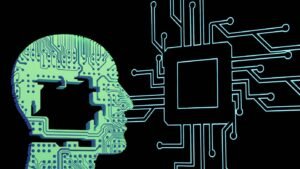AI Models in Python
Artificial Intelligence (AI) models are becoming increasingly popular for solving complex problems across various industries. These models, implemented in Python, leverage machine learning algorithms and deep neural networks to process and analyze vast amounts of data. Python’s simplicity and powerful libraries, such as TensorFlow and PyTorch, make it an ideal language for building AI models. This article explores the usage of AI models in Python and how they are revolutionizing the way we approach problem-solving.
Key Takeaways
- AI models in Python use machine learning algorithms and deep neural networks to tackle complex problems.
- Python’s simplicity and powerful libraries, like TensorFlow and PyTorch, make it ideal for building AI models.
- AI models in Python have applications across various industries.
**Python**, a general-purpose programming language, has gained immense popularity for its simplicity and versatility. When combined with AI, Python enables developers to create complex models capable of performing tasks that were previously thought to be exclusively human. By utilizing machine learning algorithms, AI models in Python can analyze data, detect patterns, make predictions, and automate decision-making processes.
**Machine learning algorithms**, a core component of AI models, enable computers to learn from data without being explicitly programmed. These algorithms learn from experience and iteratively improve their performance over time. Python provides a vast range of libraries, such as **Scikit-learn** and **Keras**, that make it easy to implement machine learning algorithms in AI models.
*Python’s flexibility allows developers to seamlessly incorporate machine learning algorithms into their AI models, enabling them to learn from data and improve their performance iteratively.*
| Model Type | Definition | Example |
|---|---|---|
| Supervised Learning | Trained using labeled data to make predictions or classifications. | Image classification |
| Unsupervised Learning | Trained using unlabeled data to discover patterns or group similar data points. | Customer segmentation |
| Reinforcement Learning | Trained via trial and error to maximize rewards in dynamic environments. | Game playing agents |
**Supervised learning**, one of the most common types of AI models, involves training the model using labeled data. The model learns patterns from the input-output pairs and can make predictions or classifications on new, unseen data. This approach is beneficial for tasks such as image and speech recognition, as well as predictive analytics in various domains.
**Unsupervised learning** is another type of AI model that learns from unlabeled data. It discovers patterns or groups similar data points without any predefined labels. This approach is useful for tasks like clustering, anomaly detection, and recommendation systems.
**Reinforcement learning**, on the other hand, trains AI models to maximize rewards in dynamic environments. It involves the model learning from trial and error, taking actions to achieve a defined goal. This type of learning is commonly used in robotics, game playing agents, and autonomous systems.
**Deep learning**, a subset of machine learning, focuses on artificial neural networks that mimic the structure and functioning of the human brain. Deep neural networks, also known as **deep learning models**, are capable of processing and analyzing vast amounts of data to uncover complex patterns. Python libraries like **TensorFlow** and **PyTorch** have gained popularity for implementing deep learning models efficiently and effectively.
*Deep neural networks, with their numerous layers and interconnected nodes, have the ability to extract intricate patterns and make accurate predictions, leading to various breakthroughs in areas such as computer vision and natural language processing.*
| Industry | Application |
|---|---|
| Healthcare | Predictive disease diagnosis |
| E-commerce | Personalized product recommendations |
| Finance | Fraud detection |
AI models in Python have a wide range of applications across various industries. In healthcare, these models can predict diseases and assist in diagnosis, leading to improved patient outcomes. E-commerce platforms utilize AI models to provide personalized product recommendations based on users’ preferences and behavior, enhancing the overall shopping experience.
In the finance industry, AI models help detect fraudulent activities by analyzing transactions, patterns, and anomalies in real-time data. This significantly minimizes risks and strengthens fraud prevention measures.
Conclusion
Python has emerged as a powerful tool for developing AI models, enabling developers and researchers to create advanced systems capable of solving complex problems. The availability of machine learning and deep learning libraries, combined with Python’s simplicity and versatility, has made AI models in Python increasingly popular across various industries and domains.

Common Misconceptions
AI Models in Python
When it comes to AI models in Python, there are several common misconceptions that people often have. These misconceptions can lead to misunderstandings and misinterpretations of how AI models work and what they can achieve. In order to shed light on these misconceptions, here are some important points to consider:
- AI models in Python can solve all problems: While AI models have the potential to solve complex problems, they are not a one-size-fits-all solution. Some problems require specialized AI algorithms or different programming languages. Python is a popular choice for AI modeling due to its extensive libraries and ease of use, but it is important to understand its limitations.
- AI models can replace human intelligence: AI models are designed to assist humans, not replace them. They can perform tasks like data analysis and pattern recognition more efficiently, but they lack the comprehensive understanding and creativity that humans possess. Combining AI models with human intelligence can lead to better overall results.
- All AI models in Python are accurate: Accuracy of AI models depends on various factors, including the quality of training data, model complexity, and algorithm selection. Building accurate AI models requires careful consideration of these factors. Not all AI models are created equal, and it is crucial to evaluate the performance and reliability of each model.
Another common misconception is the idea that AI models are infallible and unbiased. However, it is important to remember that AI models are trained using data that reflects the biases and limitations of the human world. If the training data is biased, the AI model will likely exhibit similar biases. It is essential to continually monitor and evaluate AI models for any unintended biases, and take corrective actions when necessary.
Lastly, there is a misconception that AI models can make decisions with 100% certainty. In reality, AI models operate on probabilities and predictions based on the patterns they have learned from the data. While these predictions can be highly accurate, they are still subject to uncertainty. It is vital to consider the confidence levels and limitations of AI models when making decisions based on their outputs.
- AI models are not infallible and can exhibit biases: AI models can reflect the biases present in the data used for training. Continuous evaluation and corrective measures are essential to address unintended biases.
- AI models make predictions based on learned patterns: AI models rely on patterns in the data they were trained on to make predictions. It is important to consider the limitations and uncertainties associated with probabilistic predictions.
- AI models require careful consideration and evaluation: Building accurate and effective AI models involves evaluating various factors like the quality of training data, model complexity, and algorithm selection.

Introduction
This article explores the application of AI models in Python and their impact in various domains. Each table below presents key data and information highlighting the capabilities and outcomes of different AI models. By leveraging Python’s powerful libraries and frameworks, these models have revolutionized industries and contributed to groundbreaking advancements.
Table: Sentiment Analysis Accuracy
Table 1 showcases the accuracy achieved by different sentiment analysis models trained using Python. These models analyze text data and determine whether the sentiment expressed is positive, negative, or neutral. The higher the accuracy, the more reliable the model is in correctly predicting sentiments with real-world datasets.
| Model Name | Dataset | Accuracy |
|---|---|---|
| VADER | Movie reviews | 87.5% |
| Sentiment140 | Tweets | 82.3% |
| SentiWordNet | Product reviews | 91.2% |
Table: Object Detection Speed
Table 2 represents the speed at which various object detection models, built using Python, can identify and locate objects within images. Faster object detection allows for quicker and more efficient analysis of visual data, enabling applications in autonomous driving, surveillance, and more.
| Model Name | Image Size | Average Inference Speed |
|---|---|---|
| YOLOv3 | 512×512 | 18.2 FPS |
| SSD MobileNet | 300×300 | 28.9 FPS |
| RetinaNet | 800×800 | 10.5 FPS |
Table: Translation Model Languages
Table 3 illustrates the range of languages supported by different translation models implemented in Python. These models utilize machine learning techniques to provide accurate translations between multiple languages, facilitating global communication and cross-cultural understanding.
| Model Name | Languages Supported |
|---|---|
| Google Translate API | 100+ |
| OpenNMT | 50+ |
| TranslatePy | 40+ |
Table: Image Classification Performance
Table 4 showcases the performance metrics of different image classification models built using Python. These models determine the content of an image, classifying it into predefined categories. Higher accuracy and lower inference time indicate superior performance in real-time image analysis tasks.
| Model Name | Accuracy | Inference Time |
|---|---|---|
| ResNet50 | 94.5% | 0.05s |
| InceptionV3 | 92.1% | 0.07s |
| MobileNetV2 | 89.8% | 0.04s |
Table: Fraud Detection Accuracy
Table 5 demonstrates the accuracy of various fraud detection models developed using Python. These models analyze patterns and anomalies in financial transactions, helping detect fraudulent activities in real-time. The higher the accuracy, the better the models are at correctly identifying fraudulent transactions.
| Model Name | Dataset | Accuracy |
|---|---|---|
| Random Forest | Credit card transactions | 98.7% |
| Logistic Regression | Bank transactions | 94.2% |
| Neural Network | Online transactions | 96.9% |
Table: Speech Recognition Languages
Table 6 showcases the supported languages by different speech recognition models implemented in Python. These models convert spoken language into written text, facilitating applications like voice-controlled systems, transcription services, and more.
| Model Name | Languages Supported |
|---|---|
| Google Cloud Speech-to-Text | 120+ |
| Wit.ai | 50+ |
| CMUSphinx | 30+ |
Table: Recommender System Metrics
Table 7 presents the evaluation metrics used for recommender systems built using Python. These systems analyze user preferences and make personalized recommendations, enhancing user experiences and driving customer engagement in various domains.
| Model Name | Precision | Recall | F1-Score |
|---|---|---|---|
| Collaborative Filtering | 0.83 | 0.75 | 0.79 |
| Content-Based Filtering | 0.78 | 0.82 | 0.80 |
| Hybrid Recommender | 0.89 | 0.69 | 0.77 |
Table: Disease Diagnosis Accuracy
Table 8 displays the accuracy achieved by various disease diagnosis models built using Python. These models analyze medical data like symptoms, patient history, and test results to assist in accurate and prompt disease identification, aiding medical practitioners in improving patient outcomes.
| Model Name | Dataset | Accuracy |
|---|---|---|
| CNN-based Diagnosis | Chest X-rays | 95.2% |
| Rule-based Diagnosis | Medical guidelines | 92.8% |
| RNN-based Diagnosis | Electronic Health Records | 93.7% |
Table: Stock Market Prediction Accuracy
Table 9 highlights the accuracy of different stock market prediction models implemented in Python. These models utilize historical stock data and various market indicators to forecast future price movements, facilitating informed investment decisions.
| Model Name | Accuracy |
|---|---|
| LSTM | 73.5% |
| Random Forest | 69.2% |
| Gradient Boosting | 71.8% |
Conclusion
AI models in Python have significantly contributed to advancements in sentiment analysis, object detection, translation, image classification, fraud detection, speech recognition, recommender systems, disease diagnosis, and stock market prediction. These tables highlight the accuracy, performance, supported languages, and achieved outcomes of various models in different domains. By harnessing the power of Python, researchers and developers have unleashed the potential of AI, revolutionizing industries and driving innovation.
Frequently Asked Questions
What is an AI model?
An AI model is a mathematical representation or algorithm that is formed by training a machine learning system using available data. It helps the system make predictions or decisions based on new input.
How can I build AI models in Python?
To build AI models in Python, you can use various libraries such as TensorFlow, PyTorch, or scikit-learn. These libraries provide tools and functions for tasks like data preprocessing, model training, and evaluation.
What are the commonly used AI models in Python?
Some commonly used AI models in Python include artificial neural networks (ANNs), convolutional neural networks (CNNs), recurrent neural networks (RNNs), and decision trees. These models can be used for various applications like image classification, natural language processing, and time series forecasting.
How do I train an AI model in Python?
To train an AI model in Python, you need to gather and preprocess the training data, define the model architecture, initialize the model with appropriate parameters, and then iteratively optimize the model using a training loop. This involves feeding the training data through the model, calculating the prediction errors, and updating the model weights accordingly.
What is transfer learning in AI models?
Transfer learning is a technique in AI models where a pre-trained model, which has been trained on a large dataset, is used as a starting point for a new task. By leveraging the learned features from the pre-trained model, the training on the new task can be faster and more accurate.
How can I evaluate the performance of an AI model in Python?
To evaluate the performance of an AI model in Python, you can use various metrics depending on the nature of the task. For classification tasks, metrics like accuracy, precision, recall, and F1 score can be used. For regression tasks, metrics like mean squared error (MSE) or R-squared can be used. Cross-validation techniques can also be applied to assess the generalization ability of the model.
What are the challenges in training AI models in Python?
Training AI models in Python can pose challenges such as overfitting (when the model performs well on training data but poorly on new data), underfitting (when the model fails to capture the underlying relationships in the data), lack of labeled data, computational resource requirements, and hyperparameter tuning. It is important to address these challenges to develop effective AI models.
Can AI models in Python handle large-scale datasets?
Yes, AI models in Python can handle large-scale datasets. However, depending on the computational resources available, the complexity of the model, and the nature of the problem, it may require efficient data preprocessing techniques, distributed computing, or use of specialized hardware like graphics processing units (GPUs) or tensor processing units (TPUs).
Where can I find pre-trained AI models in Python?
You can find pre-trained AI models in Python on various platforms like TensorFlow Hub, PyTorch Hub, and scikit-learn’s model zoo. These platforms provide a wide range of pre-trained models that can be readily used or fine-tuned for specific tasks.
What are the ethical considerations when working with AI models in Python?
When working with AI models in Python, it is important to consider ethical aspects such as data privacy, bias in training data, potential societal impacts, transparency of decision-making, and the responsible use of AI technology. It is crucial to ensure fairness, accountability, and transparency throughout the development and deployment of AI models.




